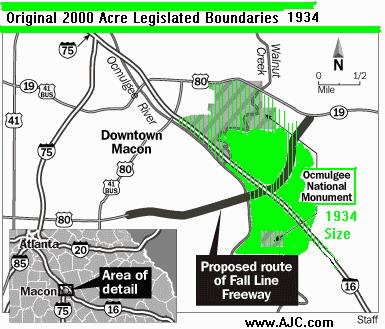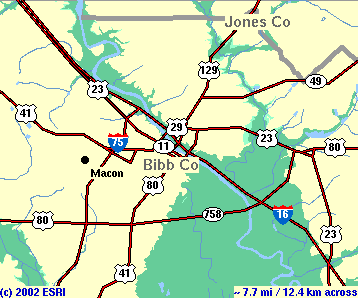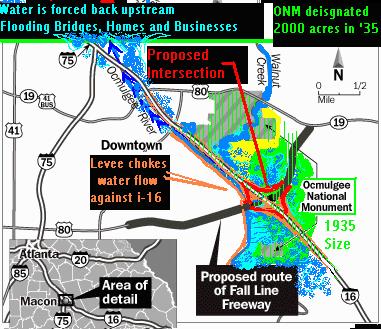|
Posted on Wed, May. 01, 2002
http://www.macon.com/mld/telegraph/news/editorial/letters/3169009.htm
The Army Corps of Engineers is seeking
$260,000 to conduct another study of the Macon Levee. Other studies
were in 1993, 1995 and 1997. The goal is to certify the levee as
providing 100-year flood protection to the 500 acres of semi-developed
land and 2,500 acres of undeveloped land located behind it. Taking this
area out of the "100-year floodplain" (on paper) and running the
proposed Eisenhower Parkway Extension through this "former" floodplain
area would promote investment and development behind the levee. Quoting
the Corps, "Without this, investors would be more inclined to expand or
establish new facilities somewhere else." Maybe that would be wise?
Macon/Bibb paid about $360,000 for Corps
studies from 1990 to 1996. They never received the Corps 1997 study
which was advertised for public comment, but then withdrawn and never
released because the Corps' belated economic analysis showed their
levee-raising project to be unjustified.
The Corps never surveyed the economic
damage from the '94 Flood either behind or outside of the levee. They
didn't do hydrologic studies to model the '94 Flood to see what impact
the levee and its failure had on flood levels. Their 1995 study (p.14)
stated that "the levee has never been overtopped" and their 1997 study
said, "Since there are no historical damages to use at Macon." The
Corps said the Flood of '94 never happened so they could increase the
cost/benefits by using standardized, rather than lower actual damages.
They used new FEMA guidelines which allowed them to reduce their
levee-raising plan by three feet and still certify it as providing
100-year protection (on paper). Still, they couldn't justify raising
the levee economically.
Now, the Corps says the levee is
deteriorating due to trees growing on it and water flowing under it.
Yet, a 1997 Corp memo says "The public has presented strong evidence
that trees have not been a detriment to the structural integrity of the
levee systems in California. And they are winning many casesÉ" A
1998 memo says portions of the Macon Levee are "underlain by
exceptionally pervious sands that are very efficient at transmitting
hydraulic head" under the levee creating boils and seepage during
floods. The Corps even believes the levee would have failed at the
breach site in 1994 from water flowing under it even if the levee had
not been overtopped. Do we need to dig up and pack clay under the levee
now?
The point is that no matter how much we do
or spend on the levee, we can't stop the river from reclaiming its
floodplain some day.
We can offer false hope and encourage
people to invest their money in the floodplain. We can even bail them
out with federal funds when they get flooded, but why? Why strengthen
the levee so it will stand while our interstates and and existing
businesses and neighborhoods flood, as happened in 1994?
The Macon Levee was and is a bad idea. The
solution may be to divide the levee, strengthening the upper portion to
protect existing development and breaking the lower end to restore the
original floodplain, thus reducing flood levels all along the river.
The problem is I wouldn't trust the Corps' study of anything.
John Wilson is a resident of Macon.
http://www.macon.com/mld/telegraph/news/editorial/letters/3169009.htm
|


